As many of my readers know, Nikon is commemorating the 90th anniversary of its Nikkor lenses, which is a perfect time to reflect on what an astonishing journey it’s been. From the first Aero-Nikkor in 1933 to the modern lenses we use today, it’s a rich legacy of glass that’s been telling our stories everywhere on the planet – and beyond.
In keeping with this spirit of storytelling and heritage, I recently had the privilege of conducting an email interview with two of Nikon’s engineers who sit on the front line of Nikon’s optics division. However, I didn’t come up with the interview questions that follow on my own; I want to thank the members at the BCG Forums who helped me with this.
Our answers today are provided by Koichi Oshita, a member of the optical division, and Hiroyuki Ishigami, a member of the UX planning department.
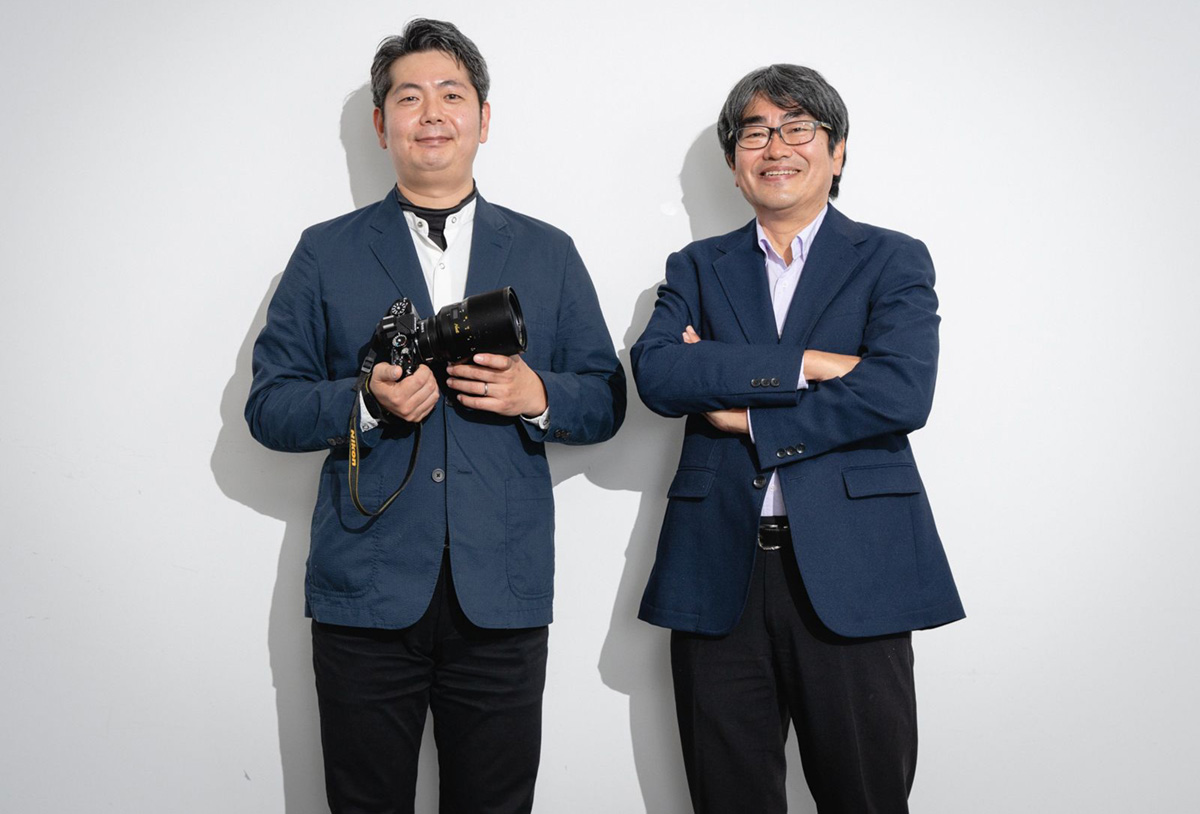
On behalf of myself, the members of the BCG Forums who submitted questions, and my readers, I want to thank them for their time.
- Nikon has been coming out with lens after lens, seemingly aimed toward the wildlife and bird photography community. Is this a new / higher priority now? Also, are you targeting bird and wildlife shooters more than sports shooters with your telephoto lens lineup? To make that even more specific, is there a ranking (maybe even equipment-specific) between sports, general journalism, fashion, weddings, etc.?
(Ishigami)
We have expanded our lineup of telephoto lenses and now offer a total of 42 NIKKOR Z lenses. In addition, we have license agreements with lens manufacturers, and they have been steadily announcing new products as well. This has served to further enrich our lineup, making it attractive to a wide range of users, effectively covering a wide range of needs, from entry-level to professional. Our business foundation in mirrorless technology has become strong, and we believe that users can now use our products with confidence.
There is no ranking of priority for shooting genres. In order to meet a wide range of needs, we will continue to introduce lenses that provide exceptional image quality beyond expectations, enabled by the Z-mount system and the largest diameter Z mount. Our goal is to provide our customers with inspiring experiences.
- Nikon is celebrating its 90th anniversary of producing Nikkor lenses. Within that vast ocean of glass, what, in your opinion, are the three most innovative lenses? In other words, which three lenses do you think made the biggest impact for Nikon and the industry as a whole?
(Ohshita)
What a tough question! Recently, I was asked internally by our marketing department to select 20 epoch-making lenses in the 90-year history of NIKKOR, and I found even that to be a big challenge.
First, I would like to mention the NIKKOR-H AUTO 28mm f/3.5, released in 1960. Although it may now seem like a standard wide-angle lens, during the early days of SLR cameras, there were no high-performance wide-angle lenses available. Wide-angle lenses were primarily used with rangefinder cameras, while telephoto lenses were used with SLRs. The introduction of this lens, which surpassed the performance of wide-angle lenses for rangefinder cameras, allowed SLRs to establish their position as versatile system cameras and ushered in a golden age of SLR photography that eventually led to digital SLRs. Additionally, the lens design used in this lens became the industry standard, not only for Nikon but also served as a reference for the creation of many excellent wide-angle lenses, which is also a reason why I wanted to mention this lens.
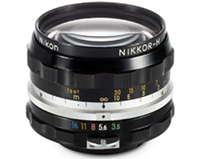
Next, I would perhaps choose the NIKKOR 400mm f/3.5 IF-ED, released in 1976. Until then, super telephoto lenses suffered from poor image quality due to chromatic aberration, as well as large size, heavy weight, and difficult focusing operation. To overcome these drawbacks, Nikon developed a unique lens design, implemented the Internal Focus (IF) system, and dramatically corrected chromatic aberration by adopting ED (Extra-low Dispersion) glass. As a result, a high-performance super telephoto lens with excellent handling and operability was created. Although lens designs have evolved over time, the fundamental philosophy of super telephoto lenses that continues to be passed down until today can be traced back to this lens. Furthermore, it is worth noting that this lens served as the “standard” super telephoto lens at the time and captured numerous impressive images in sports photography and wildlife photography.

Another lens that cannot be forgotten is the AF-S NIKKOR 14-24mm f/2.8G ED, released in 2007. As the world’s first f/2.8 zoom lens starting at 14mm, it was a unique high-performance lens at the time. It revolutionized landscape photography and opened up a new field called “starry landscape,” which captures both the earthly landscapes and the night sky simultaneously. This was made possible by the lens’s wide 14mm angle of view, bright f/2.8 aperture and high performance that sharply captures stars even at open aperture. Stars appear as streaks with long exposure times, so there is a limit to the exposure time, necessitating a bright lens. To ensure high performance, the lens was equipped with the largest diameter glass molded aspherical lens of the time. (Author’s note – this is one of my all time favorite lenses as well!)

Although the request was for three lenses, I would like to introduce one more. It is the NIKKOR Z 58mm f/0.95 S Noct, released in 2019. This lens was developed as the flagship lens of the NIKKOR Z series, incorporating high-precision large-diameter ground aspherical lenses, glass molded aspherical lenses, ED glass, ARNEO Coat/Nano Crystal Coat technologies and the best of Nikon’s design and manufacturing technologies. It can truly be considered the culmination of NIKKOR lenses. Until then, large-diameter lenses were considered “special” lenses that allowed photographers to enjoy distinctive rendering characteristics at different apertures, featuring unique aberrations when used wide open, and supporting sharp rendering when the aperture is narrowed down. However, this lens does not exhibit noticeable differences in rendering between aperture settings. It allows users to enjoy rendering at the maximum aperture on a whole new level, befitting its name, “Noct.” With an effective diameter larger than that of an 85mm f/1.4 lens, the Noct, despite featuring a standard focal length of 58mm, produces creamy bokeh reminiscent of telephoto lenses, and captures faint autumn galaxies with just a 2-second exposure. With this exceptional rendering, I am sure that it will continue to record astonishing images in the future.
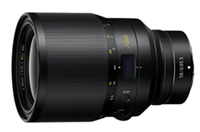
- What are the most challenging aspects of designing a new lens?
(Ohshita)
The most challenging aspect of designing a new lens is developing a product that meets customer expectations while also surpassing those expectations.
What customers expect from a new lens goes beyond just image quality and resolution. It also includes factors such as size, weight, ease of use, and price. It is a crucial and challenging task to strike a balance between performance, price, and size while understanding what customers prioritize. Moreover, when it comes to performance, there are various aspects to consider, such as center resolution, contrast, overall image uniformity, bokeh in front and behind the subject, ghosting, and with zoom lenses, the distribution of performance at different focal lengths. Each lens has different points of emphasis because customer expectations vary. It involves considering the balance of performance while thinking about what subjects customers will shoot and how they will use the lens.
During the design process, there are often situations where improving one aspect may compromise another. This can be a puzzle-like task that troubles the designer’s mind, and it represents the difficulty of lens design.
- With the new 180-600mm and 600 PF, we saw an F/6.3 aperture, which was met with some criticism online. Why are so many of the new lenses F/6.3 instead of F/5.6?
(Ishigami)
We believe that improvements in camera body sensitivity and autofocus performance have reduced the constraints on aperture values. However, making the aperture too dark limits the scenes that can be captured. The aperture value is directly linked to the size of the lens, so by considering specifications beyond f/5.6, we were able to release lenses with unprecedented size and weight. We are not limited to f/6.3 in the future, and we continue to explore possibilities including brighter options to provide innovative proposals to our users.
- I know you can’t tell us everything, but are there any new lens technologies on the horizon that will change the way we think about optics, or has lens development reached its peak?
(Ohshita)
Of course, I believe there will continue to be innovation in the future. A great example of this is the PF (Phase Fresnel) lens, which has already been realized. The idea of utilizing diffraction to create lenses has been around for a long time, but it is thanks to the development of high-precision diffraction surface processing techniques and new materials suitable for creating PF lenses that have been practically implemented today. These lenses are loved by many as ultra-compact and high-performance telephoto lenses. Additionally, we have been able to develop the Meso Amorphous Coat, which surpasses the Nano Crystal Coat, in the field of anti-reflection technology. Innovation through new materials and new technologies like these are sure to continue in the future.
On another aspect, there will also be innovation in evaluation techniques. In the early days, Nikon lens designers would trace the path of light rays and make predictions about lens performance based on the values of various aberrations. About 50 years ago, the OTF (MTF) evaluation technique was introduced, allowing lens resolution performance to be understood at the simulation stage. Nowadays, image simulation technology has advanced, and designers can to some extent determine whether a lens will produce the desired rendering at the design stage. This is a significant leap compared to the past when designers had to rely on predicting lens performance based on aberration values through years of experience. These evaluation techniques will continue to progress, and we hope that in the future, we will be able to evaluate lens rendering in other aspects as well, such as delicate and emotional qualities.
- Since every Nikon telephoto shooter wonders the same thing: Why doesn’t Nikon include lens feet with integrated Arca-Swiss dovetails?
(Ishigami)
Thank you for the feedback. Nikon will continue to evaluate the market to best meet the needs of all kinds of photographers.
- Is there a technical limitation that prevents a focus motor in an FTZ adapter, and if not, would you consider adding that to a future version to drive older F-mount autofocus lenses?
(Ishigami)
In order to provide such support, we would need to design an FTZ with a built-in motor, which would, for the sole purpose of AF-D compatibility, require a considerable increase in the size and mass of the adapter. To be completely honest, this is not our highest priority.
We are devoting our development resources on expanding the Z mount system and maximizing its benefits. This is not to say that system compatibility is not important—of course, I know that there is demand from the market, I would appreciate it if you could understand our reasoning.
- Is there a reason we don’t see PF technology in optics like 600mm F/4 and 400 F/2.8 lenses? Also, is there any limitation to having built-in teleconverters in such a PF-style lens?
(Ishigami)
PF lenses can achieve remarkable compactness and light weight. However, they may exhibit flare when used with bright light sources, which can make them challenging to use in certain situations. We are constantly working to reduce flare, but for lenses such as the 400mm f/2.8 and 600mm f/4, where achieving the highest performance without any compromises is paramount, we have not adopted PF technology. While it is technically possible to incorporate a teleconverter into a lens with PF technology, it would require creating space at the back of the lens for the teleconverter, which would require consideration in terms of maintaining compactness and light weight.
- Specifically, what’s the difference between an “S” series lens and a normal lens? Is it just sharpness, or is it a combination of factors?
(Ishigami)
The “S-Line” designation is given to NIKKOR Z lenses that meet even higher standards of Nikon’s unique design principles and quality control, in order to meet the uncompromising demands of customers for image expression. The “S” in “S-Line” represents “Superior,” “Special,” and “Sophisticated.”
S-Line lenses are characterized by their excellent resolution, beautiful bokeh, superior point-image reproduction, high image quality from maximum aperture, strict quality standards, outstanding rendering supported by the large-diameter Z-mount, the use of technologies such as Nano Crystal Coat and Meso Amorphous Coat, consideration for video performance and high dust and drip resistance achieved through the use of a rubber gasket, among various other factors. It is a combination of these features that sets S-Line lenses apart.
- Why does the Z 105 macro not support teleconverters as its predecessor did? For skittish creatures, a little added working distance is very helpful. In addition, is there any chance of a new 200mm macro down the road?
(Ishigami)
With this lens, we put emphasis on optical performance and a lighter weight and decided not to include support for teleconverters.
While I cannot comment on future products, we will consider all possibilities with an ear toward market response and user feedback.
- Regarding weather sealing, can you give us any indication of how much these lenses can take? Are they good in just a drizzle? A downpour? Is it more about the time they are exposed to participation rather than the amount of precipitation?
In particular, S-Line lenses are equipped with sealing to prevent the ingress of dust and water droplets in various parts of the lens barrel, including movable components, and also feature a rubber gasket on the lens mount, which enhances their high dust and drip resistance. We cannot provide specific information regarding the amount or duration of precipitation the lenses can withstand.
Photos & Bios
Ishigami:

I have worked at Nikon for nearly 20 years. I studied mechanical engineering in school and I had an interest in photography which guided me to Nikon. I was excited for the opportunity to contribute to the development of the brand’s latest cameras and lenses. Over the years, my interests shifted towards lens product planning, and I am currently engaged in planning activities within the product planning department.
My interest in photography center around capturing snapshots. In the past, I have found joy in the intricate process of shooting, developing and printing black and white film. I still have all the equipment, and I hope to resume that hobby again someday.
Ohshita:

My hobby of star watching was inspired by the Apollo 11 moon landing, which ultimately led me to join Nikon (formerly known as Nippon Kogaku). Ever since joining the company, I have consistently been involved in the optical design of various imaging projects. The first lens I had the privilege of designing was the R-UW AF Nikkor 28mm F2.8 for the Nikonos RS.
Over the course of nearly four decades, I have had the pleasure of contributing to the production of diverse imaging products. This includes viewfinder optical systems, compact camera lenses for film, AF optical systems, interchangeable lenses, underwater lenses, and lenses for COOLPIX cameras.
My hobbies of photography and star watching continue to this day, and on clear days, I take pleasure in gazing at the stars and capturing the sky through my lens. Recently, I have revived my guitar practice from my younger years. However, I find myself facing a challenge as my fingers no longer move as easily as they once did!
Also, if you enjoyed this interview, please consider posting it to other forums / groups you frequent to help push it out there. I’d like it to really get passed around so others can see it and so that Nikon will consider us in the future for things like this. The more traffic it gets, the better our chances. Thanks so much!

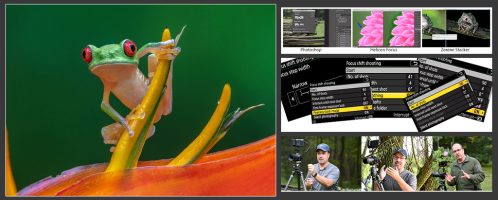
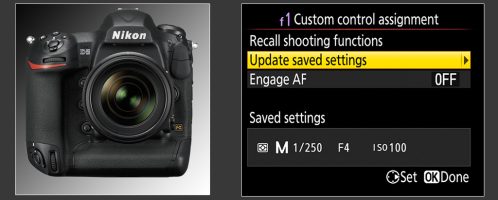

Thanks to Steve and Nikon for that interview. And those were interesting questions.
Outstanding interview. Job well done. I would enjoy reading more interviews like this one.
Super Steve! Thanks for sharing! As expected they were a bit cagey about some Qs, and really didn’t answer others, but all in all quite enlightening!
Once again, thank you!
Great interview, very informative. Thank you Steve.
Great interview! No surprise Nikon is the optical leader in the 35mm space – they have been for almost 100 years and the new Z mount lenses continue to surpass expectations and most importantly the competition. Thanks Steve for putting this together. You are looked to (deservedly) as a leader in the photographic community, and although I am not a wildlife photographer, doing portraiture, fashion, event, website, real estate etc) I find that your insights and teachings are often relevant and apply in some ways to what I do. Your books on the Nikon AF system and Exposure systems were… Read more »
Thanks so much!
What an interesting insight into Nikkor. We often forget that it’s the people that do fantastic things given the freedom to explore and develop. By way of seeing and reading their responses Oshita and Ishigami bring the human element into focus and by virtue also expose the pride and commitment they have to the company but also us as customers…Steve once again, taken us back and “Beyond” . Thanks Steve.
Good selection of questions Steve. I wouldn’t be surprised if you’re selected to be a Nikon Ambassador based on your knowledge and work (as soon as you sell the Sony gear)
We’ve talked about it and I’ve made it clear to them I don’t want it. The moment I become an Ambassador, all my credibility goes out the window for reviews. There was a time I would have jumped at the idea, but I now believe that remaining a neutral third party with expense with other gear is more beneficial.
Thank you so much for taking the time to put this “interview” together for us. How you find the time to do all that you do with your business is amazing to me. I must say that I was disappointed in the “hedge-jumping” that the Nikon reps did by directly avoiding the tough questions. Steve, I kinda got the feeling that they did not recognize your importance and such a high degree of influence that your reputation has upon their bottom line and their job future. I don’t feel that they respected your standing in our Nikon community by not… Read more »
Thanks for the kind words 🙂 The thing is, Nikon seems to be a very conservative company and I feel like they went as far with the interview as they do with any of them. Only so much they’ll say.
great interview Steve… very interesting responses to some tough questions..
Good questions Steve.
I believe that something like a 110 million Nikon lenses have been made. That’s extraordinary.
Hello, Nikon is trying to improve the quality of its cars in Thailand, unfortunately, the new bodies were not of the right quality. Secondly Focus In the category of producing suitable and affordable lenses for the middle class, it will try to make it easier to access the Nikon brand, unfortunately.
My love berand
Very nice camera and optice hi quality.
That was a real treat to hear from two of Nikon’s talented team, just want to thank them and you Steve for making it happen! Ps rain covers can be your friends, cameras and lenses are not waterproof apart from Nikonos of course!
Great interview, your choice of community questions was excellent. I especially enjoyed hearing their selection of favourite lenses and the reasons behind those choices (the 28mm F mount resonated with me as the first Nikon lens I ever bought was the 28/3.5 AI). Their response on the use of PF elements was useful as well. I was also surprised at how definitive they were about not putting in a motor in the FTZ adapter, you don’t often see such directness from their response to questions which normally contain a degree of open endedness.
LOL, yeah, that was a hard “no” on adding a motor 🙂
Steve: Great interview. The reoluctance to answer some questions is understandable. Despite this I found the conversation informative and useful. Keep up your great work. I’mm going to be 77 in a couple of months and wish I’d have found you years ago when I was physically able to enjoy all types of field photography.
That is a very pleasant interview
Nice Job steve, even though they ducked a few questions. Am a great fan of your work & learnt so much from your videos. Actually the way they have upgraded the Z9 & Z8 with firmware updates , has really pleased Nikon users like us who almost changed our system to Nikon/ Canon. However Can we get them to do a firmware update to show zebra pattern in the view finder when you have blownout highlights in stills . Surprisingly this is available in Video mode
I’ve been asking for zebras – I don’t know why they don’t add it.
Great questions and good answers. Obviously there are things that they cannot or will not say. You gave them a chance, but they stuck to reasonable responses. I really liked the question and answers about the three most innovative lenses. Obviously the question about Arca Swiss dovetails on the lens foot was avoided. Thanks for trying.
LOL, yeah, the dodged a few of them, but I it’s always worth a try 🙂
Dear Steve, You constantly amaze me with how you always “drill down” to get the best not only in your own photo experiences but with your willingness to share your knowledge to help us do the same. Your ‘talk’ with these Nikon reps, and once again willingness to share this experience and information, speaks volumes about you as a person. You are filled with kindness, generosity and love. You have never been shy asking others for their input, realizing we all have gaps in our knowledge. Sharing not only your love of wildlife but also respect for all creatures, gives… Read more »
Thanks so much! That’s very kind of you to say. Although, this time, Nikon and the forum members did the heavy lifting 🙂
Thank you Steve for sharing with us this interview! We are so grateful with your questions we could get some feedback about quality and the way Nikon lenses are produced as well their limitations. Excellent review and job well done.
Wonderful interview Steve! Thank you for putting this together for all of us. Well done sir.
Steve, thanks for doing this and sending us these insights on so many question many of us have. The answers are very carefully metered. I think the answer on the Arca-Swiss is much to avoid a possible patent or licensing issue. Given the quality of Nikon’s larger lens — say 400mm and beyond, there is no reason that Nikon should not have a properly designed foot for a gimbal head.
Thanks Steve for enlightening us all with this valuable conversation. It was great to learn directly from the great lenssmiths about the new achievements in the ever- great Nikkor lineup of lenses.
Very nice Steve, Love my 600 f6.3 PF and just updated the firmware on my Z8 and WOW bravo Nikon, But I was also hoping they added the rumored Pre Focus RAW, But they might add it to the Z9 first.
Great questions. Based on their answer regarding a motorized FTZ adapter, I don’t think we’ll see one of those anytime soon if ever from Nikon. Hopefully a 3rd party can fill this void sooner than later.
Thanks Steve for this, always “more than very interesting” interview to get such direct feedback from Nikon.
Why to have a lens with native Arca-Swiss? It’s not the only technology available, I, personally, use the Manfrotto RC2 system on all my cameras and mono/tri-pods. It’s a simple system, cheaper than the Arca-Swiss one. Perhaps not available i the US, at least here in Europe.
Like all your posts and videos. Thanks!
I think the thing is, adding an Arca-Swiss dovetail to the existing feet wouldn’t negate the option for using other tripod attachment methods, but it would make it easier for the large percentage of us who do use Arca-Swiss.
Yes, Steve, I’ve wondered about this for a while now…seeing that Arca-Swiss is likely the most popular type of tripod/monopod head configuration. Would negate the extra hassle and expense of buying the Arca-Swiss plates from Kirk, RRS, etc.
Indeed, I have suggested these Arca grooves over the last 25+ years. Olympus did it, Sigma did it, now I think Tamron also did it in some models etc, but not Nikon. After my suggestion, I have come to realize that the foot will not satisfy all users, as the foot is often too short vs the size of the lens. Even a lens with the Arca clamp grooves, I found myself adding a 10-15cm (or more!) plate that also serves to carry the lens/body combo. Not only to add more length, but also add space between the lens body… Read more »
Steve, thanks for doing this…always interesting to get even a small glimpse into lives and perspective of the people who are involved product planning and engineering at companies like this. Having retired 5 years ago from a 22 year career with a major Japanese electronics mfr, I had many a meeting with product planners, engineers and upper management with regards to future products. It’s a process few consumers of the photographic products we spend our money on can really relate to. There are always tradeoffs to be made…and sometimes people putting their careers on the line when they strongly push… Read more »
Thanks – it was a lot of fun to do 🙂
Many Thanks Steve a great interview and really glad you brought up the possibility of Nikon once again making a 200mm macro, I really miss the lens.